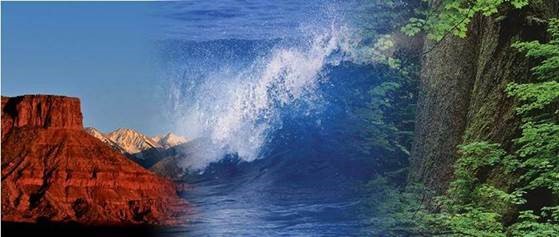
Faculty Publications
Document Type
Article
Abstract
A comprehensive survey of dissolved organic carbon (DOC) and chromophoric dissolved organic matter (CDOM) was conducted in the Canada and Makarov Basins and adjacent seas during 2010–2012 to investigate the dynamics of dissolved organic matter (DOM) in the Arctic Ocean. Sources and distributions of DOM in polar surface waters were very heterogeneous and closely linked to hydrological conditions. Canada Basin surface waters had relatively low DOC concentrations (69 ± 6 μmol L−1), CDOM absorption (a325: 0.32 ± 0.07 m−1) and CDOM-derived lignin phenols (3 ± 0.4 nmol L−1), and high spectral slope values (S275–295: 31.7 ± 2.3 μm−1), indicating minor terrigenous inputs and evidence of photochemical alteration in the Beaufort Gyre. By contrast, surface waters of the Makarov Basin had elevated DOC (108 ± 9 μmol L−1) and lignin phenol concentrations (15 ± 3 nmol L−1), high a325 values (1.36 ± 0.18 m−1), and low S275–295 values (22.8 ± 0.8 μm−1), indicating pronounced Siberian river inputs associated with the Transpolar Drift and minor photochemical alteration. Observations near the Mendeleev Plain suggested limited interactions of the Transpolar Drift with Canada Basin waters, a scenario favoring export of Arctic DOM to the North Atlantic. The influence of sea-ice melt on DOM was region-dependent, resulting in an increase (Beaufort Sea), a decrease (Bering-Chukchi Seas), and negligible change (deep basins) in surface DOC concentrations and a325 values. Halocline structures differed between basins, but the Canada Basin upper halocline and Makarov Basin halocline were comparable in their average DOC (65–70 μmol L−1) and lignin phenol concentrations (3–4 nmol L−1) and S275–295 values (22.9–23.7 μm−1). Deep-water DOC concentrations decreased by 6–8 μmol L−1 with increasing depth, water mass age, nutrient concentrations, and apparent oxygen utilization. Maximal estimates of DOC degradation rates (0.036–0.039 μmol L−1 yr−1) in the deep Arctic were lower than those in other ocean basins, possibly due to low water temperatures. DOC concentrations in bottom waters (>2500 m; 46 ± 2 μmol L−1) of the Canada and Makarov Basins were slightly lower than those reported for deep waters of the Eurasian Basin and Nordic Seas. Elevated a325 values (by 10–20%) were observed near the seafloor, indicating biological activity in Arctic basin sediments.
Digital Object Identifier (DOI)
Publication Info
Published in Frontiers in Marine Science, Volume 3, 2016.
Rights
© 2016 Shen, Benner, Robbins and Wynn. This is an open-access article distributed under the terms of the Creative Commons Attribution License (CC BY). The use, distribution or reproduction in other forums is permitted, provided the original author(s) or licensor are credited and that the original publication in this journal is cited, in accordance with accepted academic practice. No use, distribution or reproduction is permitted which does not comply with these terms.
APA Citation
Shen, Y., Benner, R., Robbins, L. L., & Wynn, J. G. (2016). Sources, distributions, and dynamics of dissolved organic matter in the Canada and Makarov basins. Frontiers in Marine Science, 3. https://doi.org/10.3389/fmars.2016.00198

